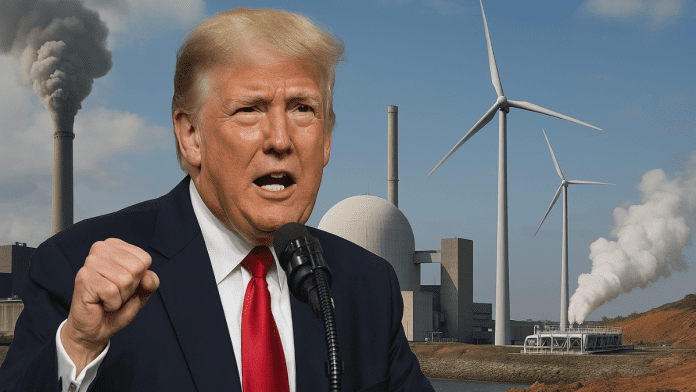🕒 Last updated on July 15, 2025
President Donald Trump’s recently enacted $3.4 trillion tax and spending law is transforming aspects of the energy industry that had been lagging behind. Signed into law on July 4, this massive fiscal package aims to support certain fossil fuel and nuclear sectors while dialing back government help for renewables like wind and solar.
Sweeping Reforms Shake Up the Energy Industry
The law gives new hope to coal, nuclear, geothermal, and even geoengineering—a little-known climate intervention technology. These sectors had faced major challenges in recent years, either due to competition, cost, or regulatory hurdles. But with this law, they now have strong government backing.
For example, the coal industry, once struggling despite Trump’s past support, is receiving fresh help. The law phases out tax credits for solar and wind, making coal more financially competitive again. It also adds “metallurgical coal”—a ”type used in steelmaking—to the list of critical materials eligible for tax credits.
In April, Trump had already signed an executive order supporting coal-powered electricity for data centers. His administration even stopped the planned shutdown of a coal plant. Supporters argue this helps keep the power grid stable, but critics warn it could worsen climate change and increase local energy bills.
Nuclear and Geothermal Energy See a Policy Boost
Nuclear power, once seen as old and risky, is getting a big push from this law. The growing need for nonstop, carbon-free electricity—especially as artificial intelligence (AI) systems demand more power—has led to renewed interest in nuclear energy.
🌞 Greener Homes, Happier Wallets: How Energy Efficiency Is Creating Comfort While Saving the Planet
Though only two new nuclear reactors have opened in recent years, and none are currently being built, the law aims to speed things up. It strengthens support for nuclear by taking away some of the financial advantages previously held by wind and solar. Trump also signed an earlier order urging faster approval of nuclear projects by federal regulators.
One major challenge remains: any nuclear project involving foreign companies considered risky will not get tax credits. This could make some investors hesitate, even with the new support in place.
Meanwhile, geothermal energy—the use of underground heat to make electricity—is also making a comeback. It’s clean, reliable, and always available. But in the past, it was too expensive and hard to set up. Now, energy companies are using methods borrowed from oil and gas drilling to expand geothermal’s reach.
Geothermal, like nuclear, is spared from the tax credit cuts that hit wind and solar. That makes it more attractive to energy developers. And because it uses similar technology to fossil fuels, existing workers and equipment can shift more easily into this green field.
Geoengineering Steps Out of the Shadows
One of the most surprising parts of the new law is its possible impact on geoengineering—a set of technologies that aim to cool the Earth by altering the atmosphere. These ideas have been around for decades but were never taken seriously due to their unknown risks and controversial nature.
💰 Tariff Windfall: U.S. Rakes in Record $113 Billion—Trump’s Trade War Pays Off
However, with climate disasters like fires, floods, and freezes becoming more frequent, some experts believe governments might be more willing to try bold solutions. The law does not directly mention geoengineering, but some analysts believe it paves the way for such projects to move forward.
One idea being discussed is called “stratospheric aerosol injection,” which would involve spraying tiny particles into the atmosphere to reflect sunlight. The goal would be to slow global warming while still using fossil fuels to power new technologies like AI.
Supporters argue that if other efforts to reduce emissions are not fast enough, geoengineering could become a serious option. They see it as a way to balance economic growth with climate control. Critics, however, warn that playing with the Earth’s climate system is risky and could have unknown side effects.
Trump’s fiscal package is already shaking up the energy world. While it reduces incentives for clean energy sources like wind and solar, it strongly supports older and often overlooked sectors such as coal, nuclear, geothermal, and even geoengineering. The law is expected to change how the U.S. produces and uses energy, with ripple effects likely to be felt across industries and around the world.

